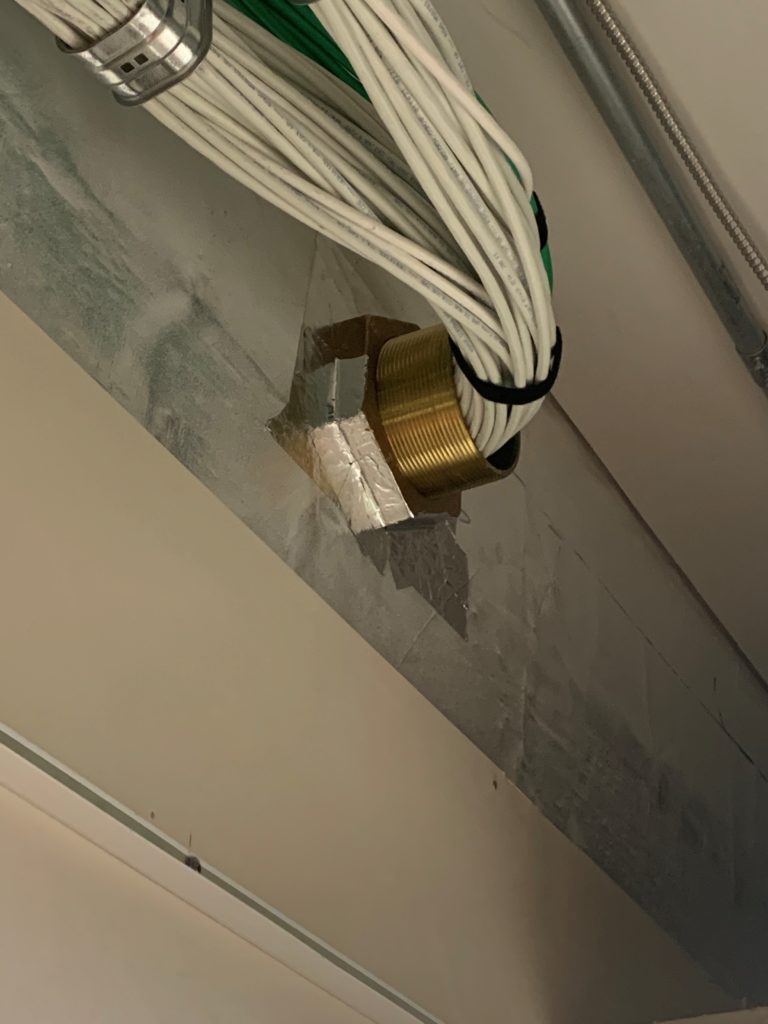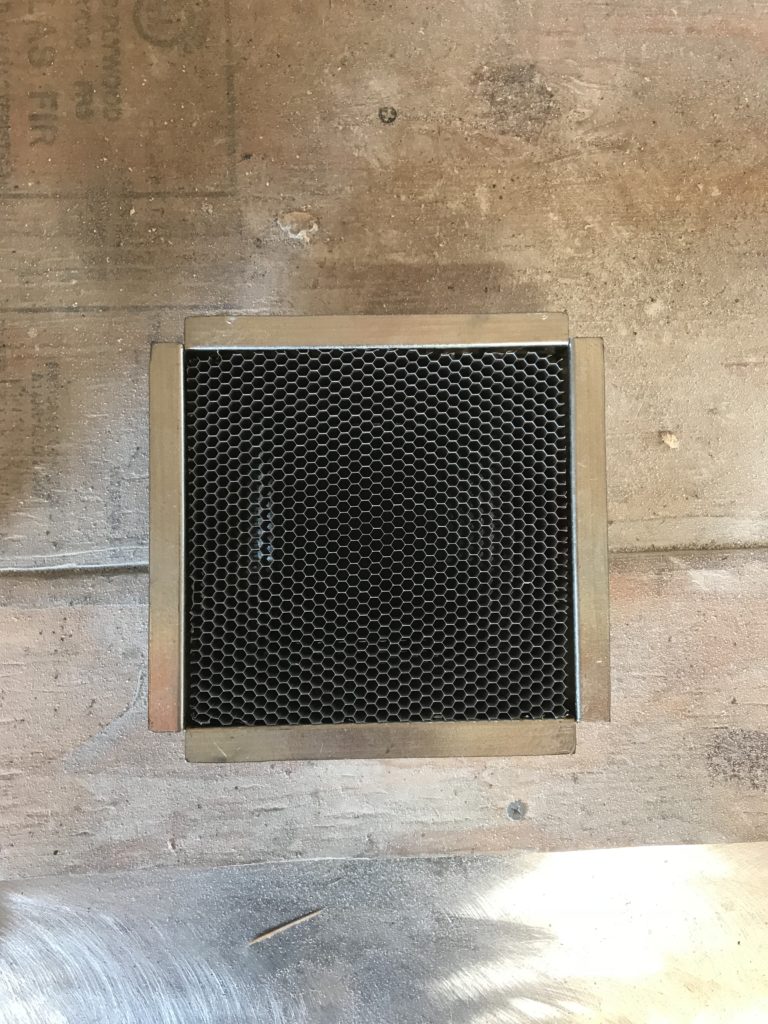An overview of the common TEMPEST mitigation
If your SCIF or SAPF is going to be processing secure information, you will have to be concerned with adding means to addressing TEMPEST concerns. TEMPEST is the unclassified short name for the study, investigation and mitigation of unintended emanations, or intelligence-bearing signals that can escape the facility and be picked up by outsiders to reveal classified information. Waveguides are often used to block these signals from escaping or entering at any penetrations in the facility perimeter.

Waveguides for cables
Types of Waveguides
There are two types of waveguides commonly seen in secure facilities. One is inside penetrations set up for things like phone cables to leave the facility. These look like a metal pipe set into the wall. This pipe is made from a metal with a low bulk resistance like brass, which allows the signal to enter. The signal is then sent to a wire that’s fastened to the waveguide and grounds the signal, preventing it from escaping the perimeter.
The other common type is a honeycomb waveguide. These look like what the name suggests, with metal patterned in the shape of honeycomb of varying sizes. These are placed in larger penetrations like vents and HVAC ducts. The pattern blocks signals from entering but still allows air to flow through the holes, which is a major benefit. These prevent signals up to a certain frequency from escaping.
The holes come in a variety of sizes. The smaller the hole, the higher the frequency of signals the waveguide can block. However, this has to be balanced against maintaining air flow so the air conditioning and heating can work as needed and the facility can be comfortable to be in. There are tests that can be run to ensure enough air is flowing through the waveguide.
This is a type of waveguide that you can find in your home – if you look at your microwave door, you’ll likely see a tight honeycomb pattern. This is a waveguide preventing radiation from escaping the microwave.
Considerations When Planning for Waveguides
TEMPEST mitigations need to be included in your initial facility design and approved by both the Accrediting Official (AO) and Certified TEMPEST Technical Authority (CTTA). This means you need to know your TEMPEST requirements, which will come from the CTTA, and how you’ll be addressing them early in your construction process. The CTTA has a large caseload, so it might take a while to receive their guidance, but it’s always better to wait rather than try to proceed on risk without their or AO approval. This will be the stage where you decide which waveguides will be used and where.

Honeycomb waveguide
However, sometimes after the facility is built, the perimeter walls’ RF shielding may not be performing at the required levels. In this case, you can get AO approval to add additional waveguides in order to raise the shielding effectiveness. While this is not ideal, as it will add further time to your project for approval which will in turn raise costs, it will significantly improve performance.
Waveguides are most often made of brass or bronze with a protective coating of galvanized steel or aluminum to prevent corrosion. Currently, there is a major shortage of brass. If you are looking to install waveguides made with brass, you will likely be looking at a significant increase in lead times of multiple months.
Waveguides can range anywhere from $90-$1500 a piece depending on material, size and type of waveguide.
If you’re working on a secure facility and have questions about your TEMPEST requirements or any other aspects of the SCIF and SAPF construction process, Adamo can help. Our consultants will partner with your team and offer our expertise in any part of your project lifecycle from pre-design to accreditation. We also offer RF shielding and acoustic protection testing services so you can ensure your facility is meeting its requirements.



